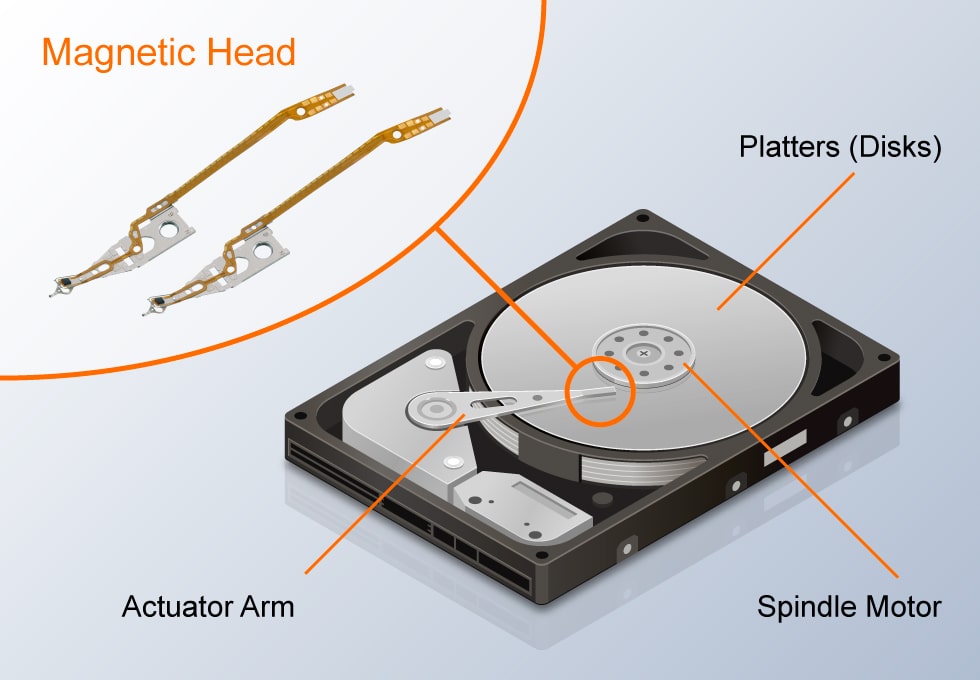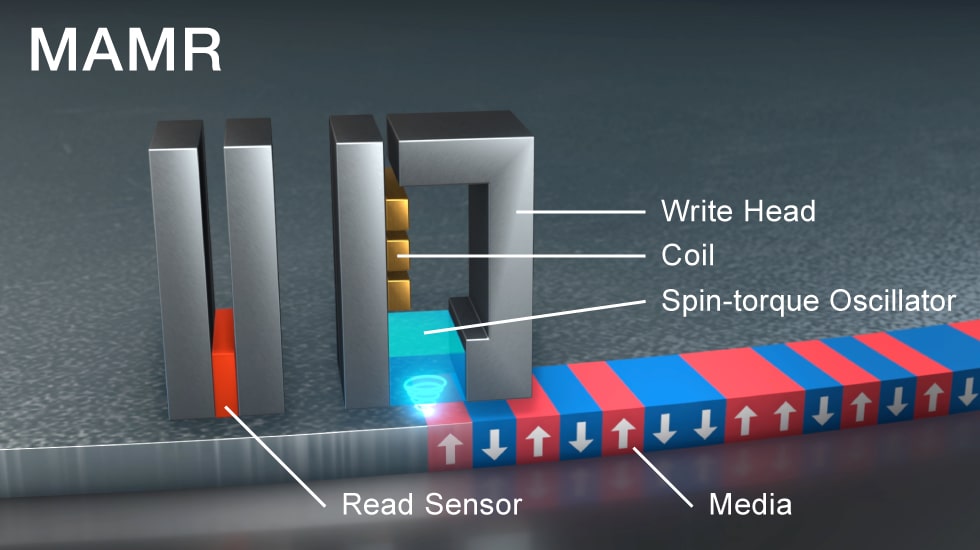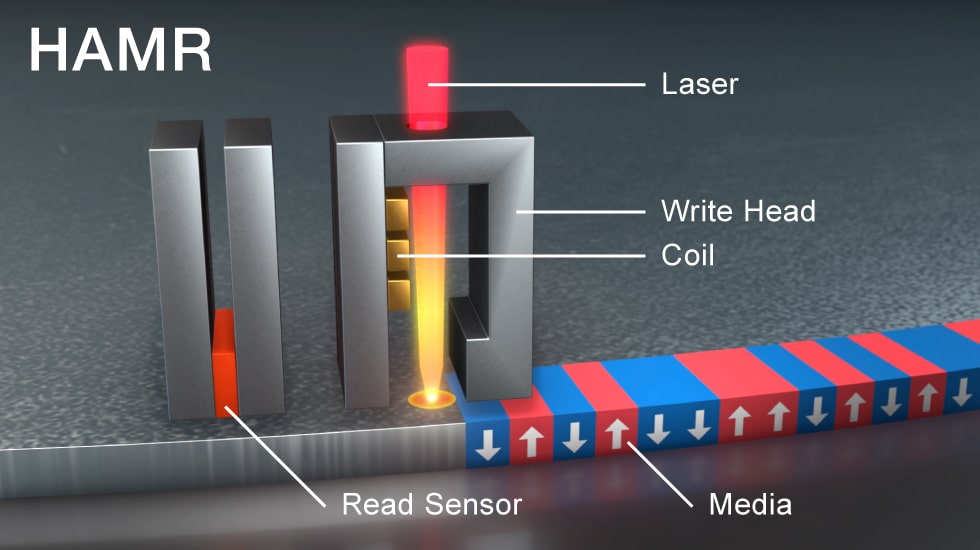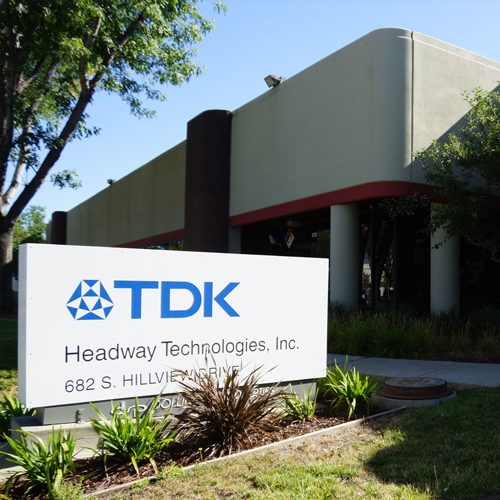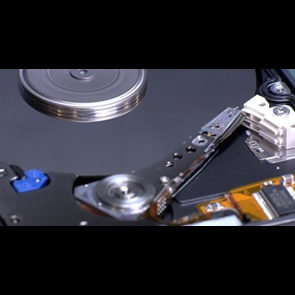Cutting-edge HDD Head Technologies are Supporting the Digital Transformation (DX) of Society
HDDs are the High-Capacity, Low-Cost Data Storage Solution for the DX Era
Today, a plethora of data is generated by individuals, businesses, IoT devices and sensors, sent through the Internet, and recorded for subsequent use. Generally, digital data is recorded on HDDs and solid-state disks (SSDs). While SSDs—which are based on flash memory and feature high speeds and low power consumption—are now widely used in personal computers; HDDs—with their large capacities and superior cost per bit (cost per amount of data recordable)—play a leading role in near-line storage*1 used in data centers. With the growth of 5G communications and IoT devices and the emergence of edge computing*2, the amount of data that needs to be stored in data centers will continue to increase—which, in turn, is expected to drive the need for HDDs even further.
The annual amount of data generated worldwide is expected to increase to 175ZB (one zettabyte (ZB) equals one billion terabytes (TB), which equals 1,000 gigabytes (GB), which equals 1,000,000 megabytes (MB)) by 2025.
The Evolution of HDD Recording Technologies, Enabled by Magnetic Heads
The capacity of HDDs has increased hand-in-hand with the proliferation of personal computers, beginning with just a few tens of megabytes in the 1980s, to typically several terabytes in the 2020s—exceeding a hundred thousand-fold increase. A key factor that enabled this dramatic increase in capacity is the technological innovations behind the magnetic head, which reads and writes data in HDDs.
TDK has long been a leading manufacturer of HDD magnetic heads, developing innovative head technologies over the years. In 1987, we developed the thin-film magnetic head*3, which significantly increased recording density over conventional heads. In 2005, we commercialized the Perpendicular Magnetic Recording (PMR)*4 head, which broke the density limitations of Longitudinal Magnetic Recording*5. The Perpendicular TMR head, which incorporates high-sensitivity TMR technology*6, has pushed recording densities even further, enabling higher-capacity HDDs.
The recording density of an HDD has recently surpassed 1Tb/in2 (terabits per square inch). This is equivalent to a trillion magnets lined up inside a single square inch. With such high densities, the size of a recording bit within the recording (magnetic) layer has become so small that writing using current magnetic head technology is approaching the limits of physics.
 CTO of Headway Technologies
CTO of Headway TechnologiesMoris Dovek
To address this problem, TDK is engaged in the development of two next-generation recording methods. One is Microwave-Assisted Magnetic Recording (MAMR). The other is Heat-Assisted Magnetic Recording (HAMR), which employs lasers. Moris Dovek, CTO of Headway Technologies, a TDK Group company and magnetic head manufacturer, explains why they are working on both of these future methods.
“We are currently developing two technologies, MAMR and HAMR. As the world’s only dedicated manufacturer of HDD heads, we believe we need to be ready with both technologies, because we don’t yet know which one will become mainstream first in the near future.”
The evolution of magnetic recording methods and HDD recording densities
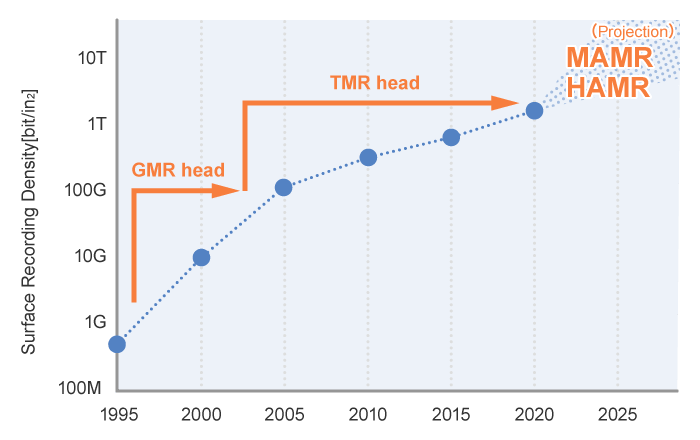
Source: Created based on TDK data
What are MAMR and HAMR, the Next-Generation Recording Technologies in the Spotlight?
As the density of HDDs increases, recording bits become finer, which necessitates higher magnetic coercivity*7 of the recording bits in order to retain thermal stability. However, when coercivity is increased, the magnetic field from the head becomes insufficient for writing the data, thereby requiring external energy to assist with the writing.
In MAMR, microwaves are emitted from a spin torque element*8 at the tip of the magnetic head to temporarily weaken the coercivity of the recording bit during recording. HAMR, on the other hand, uses a laser beam to instantaneously heat the recording disc and locally weaken coercivity while recording. These next-generation recording methods are projected to improve the recording density of HDDs to as high as 4Tb/in2, enabling 3.5-inch HDDs with capacities of 40 to 60TB, which is about four times what is available today.
(Bottom) HAMR (Heat-Assisted Magnetic Recording): Recording is performed by heating the media instantaneously with a laser spot as small as the bit in order to locally reduce magnetic coercivity.
As the world’s only manufacturer specializing in magnetic heads, TDK supplies them to HDD manufacturers around the world. “Because we work with every HDD manufacturer, each of which has unique needs, we enjoy the benefit of receiving a diversity of performance data and feedback, which enhances our work. With respect to MAMR and HAMR, our position as a researcher in both technologies allows us to cross-pollinate our achievements made in both fields. Ultimately, we are driven by the challenge to continually exceed the expectations of our customers,” said Dovek.
HDDs will continue to evolve as a mainstay of data storage. Through the development of magnetic heads—a key component of HDDs—TDK will continue to play a critical part in the progress of a digital society.
Terminology
- Near-line storage: An abbreviation of near-online—an intermediary concept between online, where data usage is frequent and high reliability and performance are required, such as enterprise data processing, and offline, which refers to long-term data storage for archival purposes. High capacity, low cost and high reliability are key requirements.
- Edge computing: A scheme that processes information at the location where the data is generated, such as sensors and information terminals, thereby increasing the processing speed of the overall system.
- Thin-film magnetic head: A type of magnetic head for HDDs manufactured using advanced thin-film processing technology that forms multiple layers of film measured in micrometers.
- Perpendicular magnetic recording: A recording method that increases recording density by magnetizing the magnetic layer in the direction perpendicular to the HDD’s recording media.
- Longitudinal magnetic recording: A recording method in which the magnetic layer is magnetized in the direction parallel to the HDD’s recording media surface.
- TMR head: A head that can accurately read high-density signals using a TMR (tunnel magnetoresistive effect) element.
- Magnetic coercivity: The strength of the opposite-direction magnetic field required to set the polarity of a magnetic material to zero. This also represents the strength of a magnet.
- Spin torque element: A device whose magnetic alignment can be changed or reversed by passing an electric current through a magnetoresistive element.


